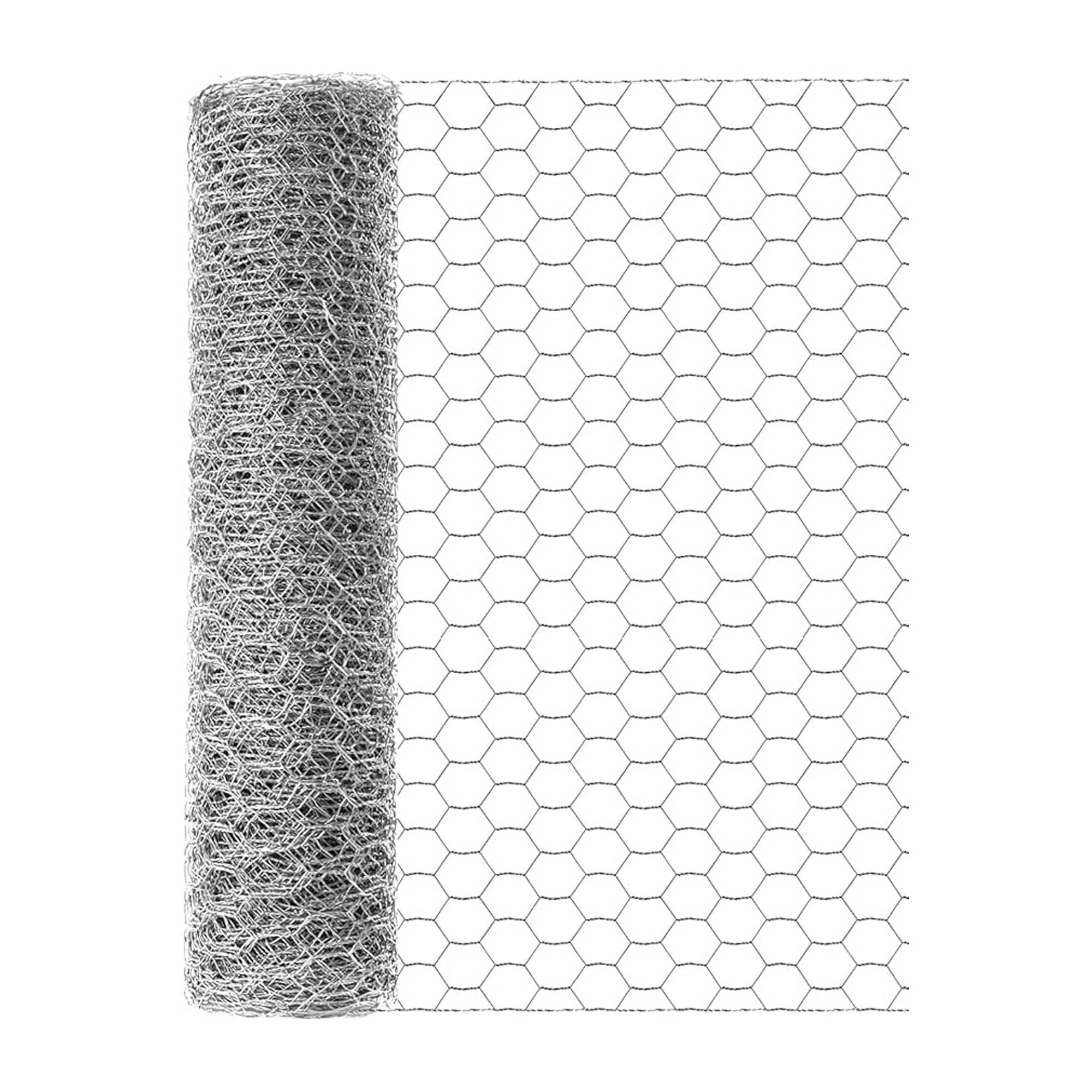How to overwinter banana trees – professional tips to keep your tropical plant protected
If you’re expecting cooler conditions this winter, you need this expert advice
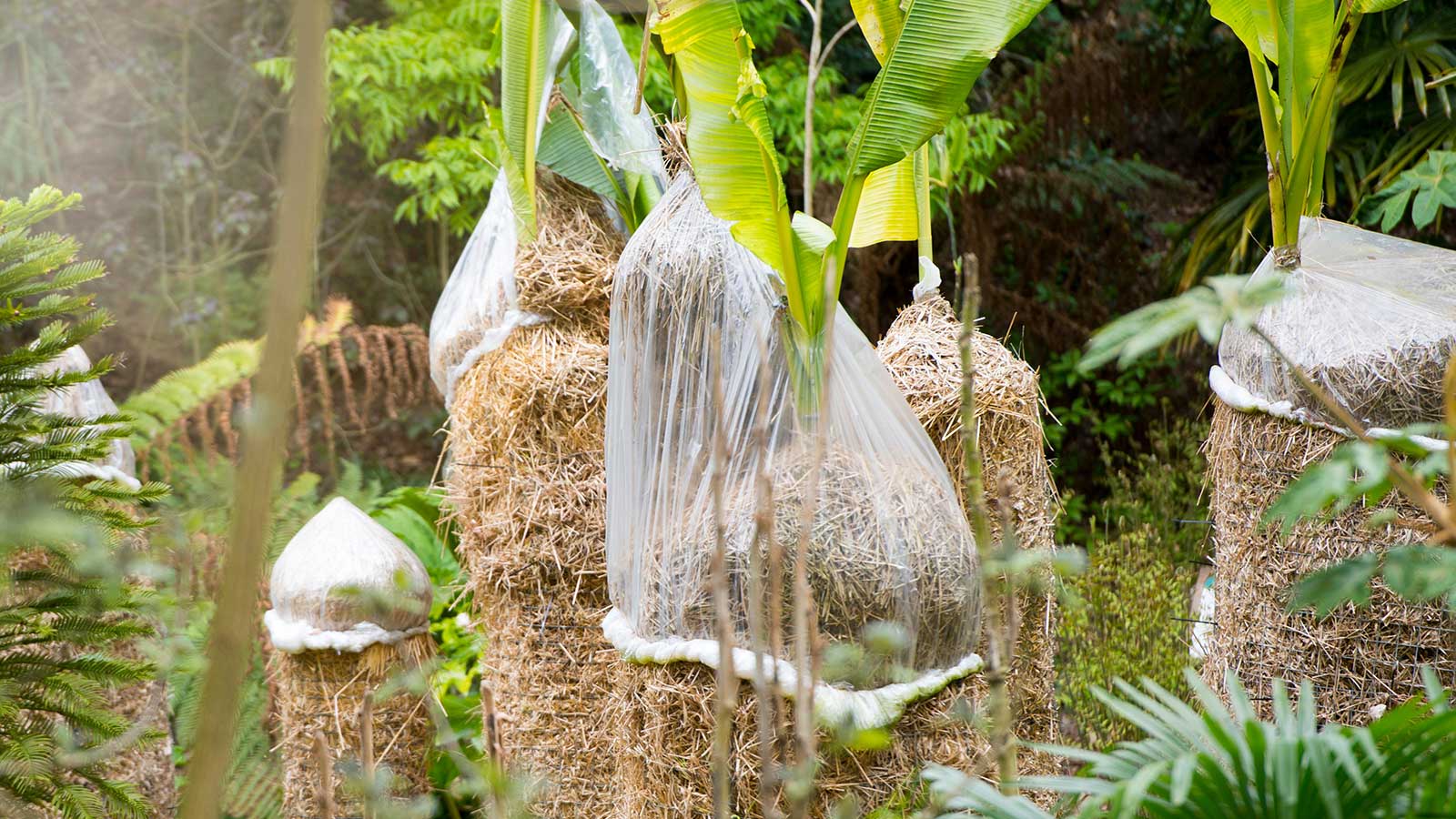

With their large, lush leaves, banana trees bring a tropical vibe to any backyard. But, if you want to enjoy their dramatic display year after year, you’ll need to protect them from cold winters.
Without this crucial step of banana tree care, your precious plants can be damaged by frosts, or, at worst, be killed completely. Even cold hardy bananas need a helping hand to survive inclement weather and bounce back quickly in spring, despite tolerating lower temperatures.
I turned to the experts for advice on how to overwinter banana trees, and preparing them for the cooler season. Below, they share their practical tips.

These tropical plants need winter protection if grown in milder climes
Pro tips to overwinter banana trees in your backyard
It’s always worth protecting plants from frost if they need it, and it isn’t too tricky once you know how.
Bringing banana trees indoors for winter
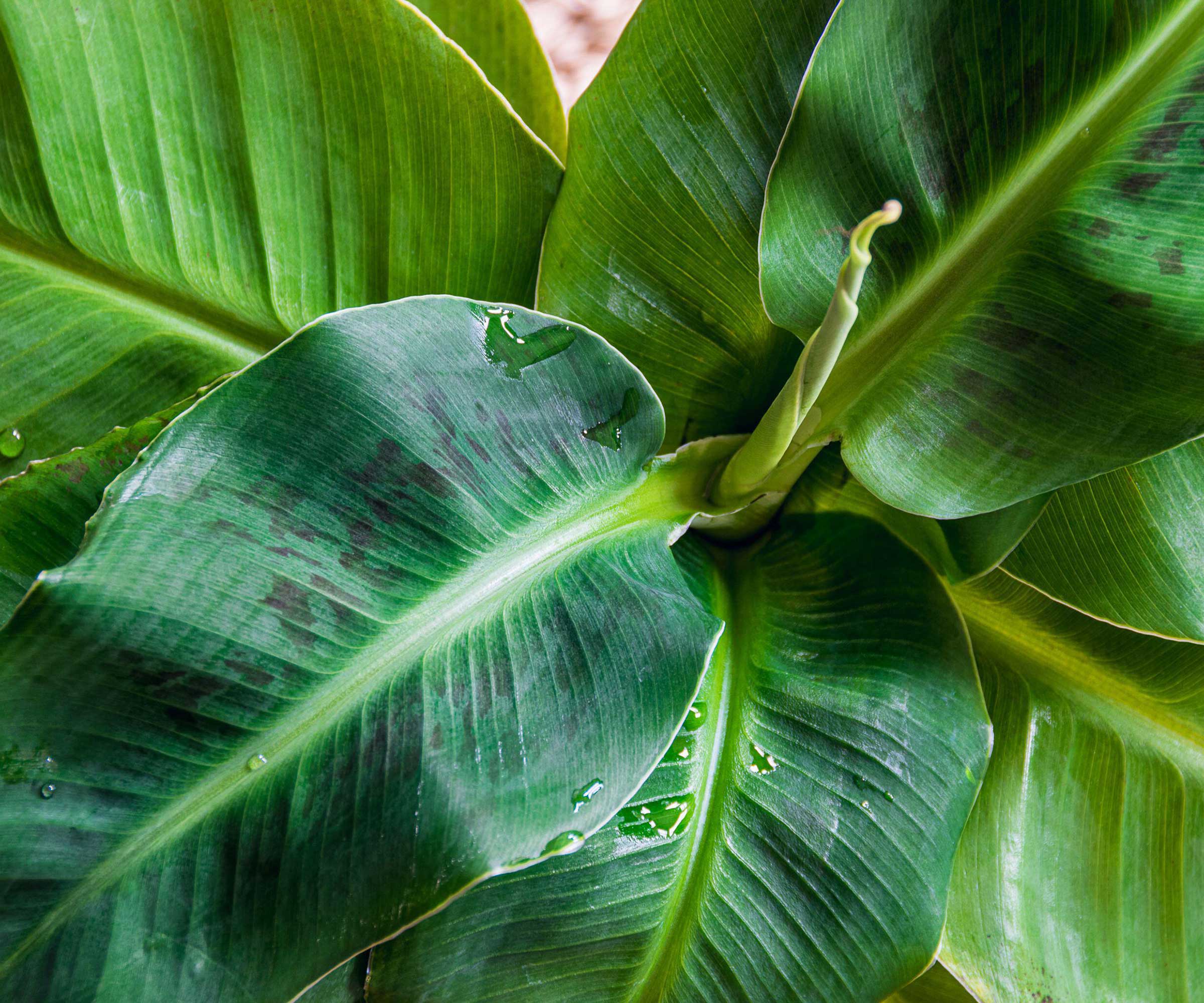
Smaller varieties of banana trees make great houseplants over winter
The safest way to ensure your banana plant survives the winter is to bring it indoors before temperatures drop. This is particularly the case for tender varieties, young plants, and those grown in containers, all of which are more vulnerable to damage. In-ground plants can be dug up in the fall and moved into pots with fresh compost. They make striking tropical houseplants.
‘If possible, gradually acclimate the plant to indoor conditions by placing it in a sheltered outdoor spot for a week or so before moving it fully indoors,’ says horticulturalist Gail Pabst of the National Garden Bureau. Once indoors, she recommends keeping it in a sunny location, such as a south-facing window.
If you don’t have space for their large, architectural leaves in your home, you can cut the plants back. ‘Cut the trunk (actually a pseudostem which is a false stem composed of tightly packed, overlapping leaf bases) to 4-8 inches above the ground using a sharp knife,’ Gail says. ‘Place the remaining stump and roots in a cool, frost-free location like a barely-heated garage, root cellar, or crawl space.’ The plant will enter a dormant state where, according to Gail, no additional light or water is needed.
Design expertise in your inbox – from inspiring decorating ideas and beautiful celebrity homes to practical gardening advice and shopping round-ups.
Top tip: Remember to harden your plants off before putting them outdoors again in spring.

Gail is a passionate horticulturist with over 25 years' experience in the industry. She is an avid home gardener too and loves to try out the newest varieties and techniques. Gail's work with the National Garden Bureau and the All-America Selection has helped her to continue their mission of inspiring and teaching gardening with others.
Mulching outdoor banana trees for winter

A layer of mulch will help protect the roots
Hardy varieties, such as Musa 'Basjoo' from Fast Growing Trees, are tougher against the cold (‘Bajoo’, for instance, can be grown outdoors in hardiness zone 5). However, they still need some level of winter protection.
As mentioned above, you could simply bring yours indoors. But, if it’s in the ground and you’d rather leave it in situ, it’s a good idea to apply a layer of mulch.
Anna Ohler, the owner of Bright Lane Gardens nursery, recommends applying it thickly – 6-12 inches deep. ‘Mulching insulates the roots, protects from freezing, and retains moisture for a healthier plant come spring,’ she says.
As well as mulching to overwinter banana trees, consider removing its leaves. Or, as Evan Torchio, CEO of Tree Menders, advises, you could cut the plant right back to the ground. ‘Since the cold will kill the stalks anyway, chopping them down keeps things tidy and makes it much easier for the plant to start fresh in the spring,' he says. 'Without all the decaying leaves and stems, new growth can come up faster and healthier, so it's a simple but effective solution.’
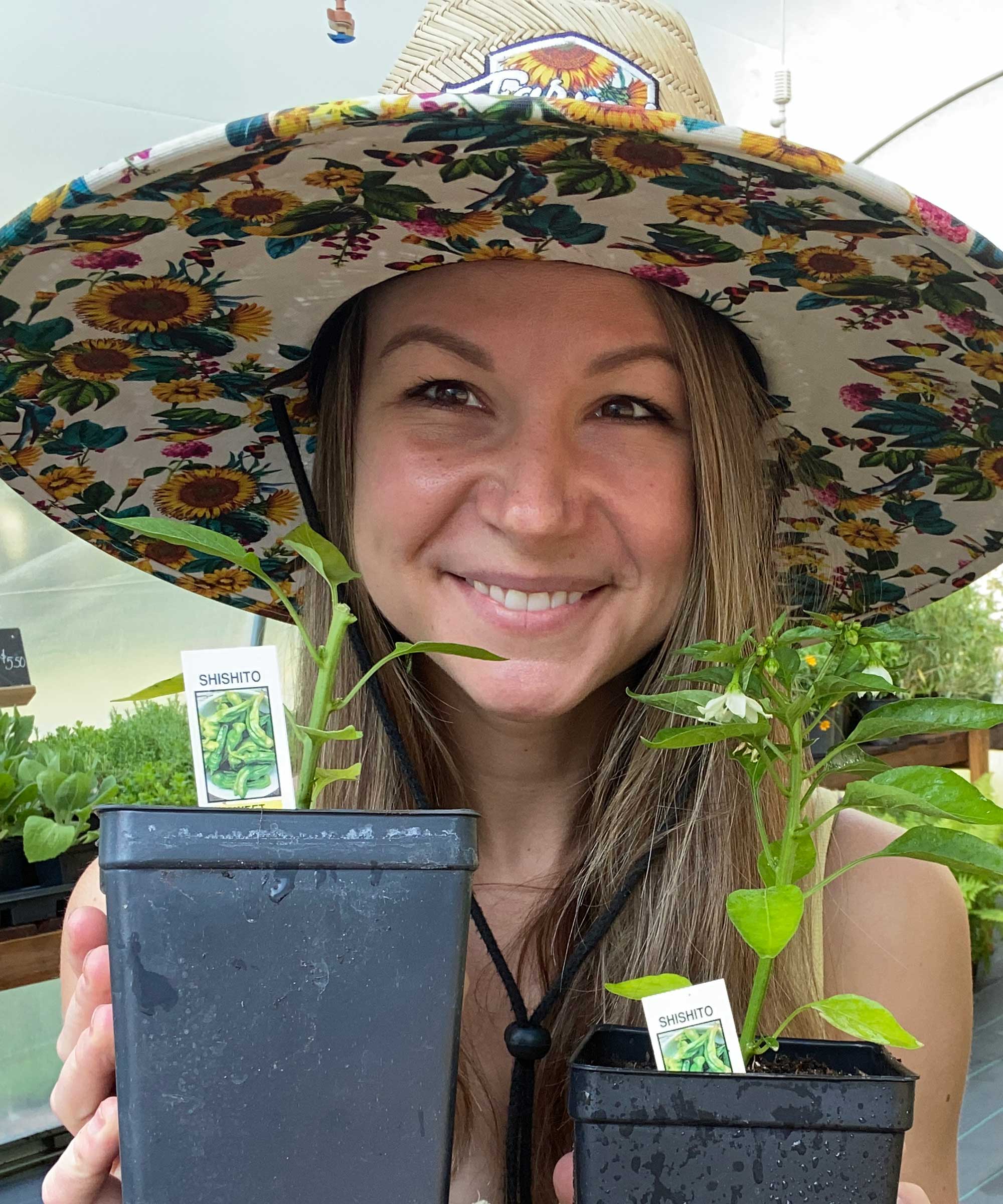
Anna is an avid plant hobbyist and the owner and operator of Bright Lane Gardens, a boutique plant nursery in Northern Michigan. With over a decade of experience in gardening and landscaping, she takes every opportunity to share her knowledge on all things plant-related. She also runs the company's YouTube channel, which is full of practical advice.

Growing up in northern Ontario, Evan has always found solace around trees. He earned a bachelor’s degree in forestry and is a member of the International Society of Arboriculture (ISA). Evan started his career in arboriculture working for a family-owned operation, before starting Tree Menders. Today, his passion is building a successful business where customer satisfaction is top of mind.
Wrapping outdoor banana trees for winter
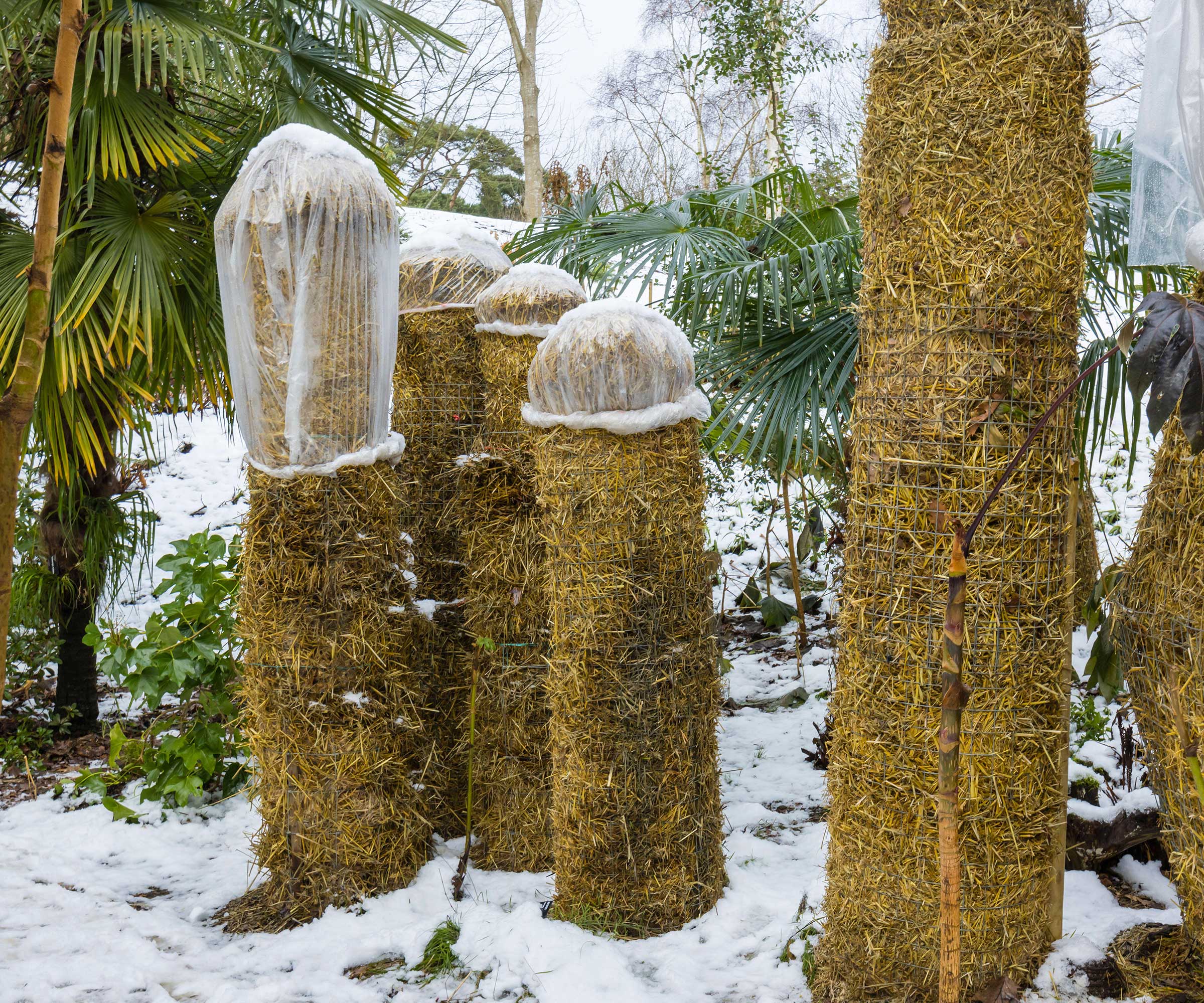
You can install protective structures made from chicken wire and straw
For even more protection, you can remove the leaves and then wrap the plant in an insulating layer, in addition to mulching. This is also a good option if you want to try to maintain the height of its stem.
Evan says to create a cage around the plant with chicken wire and stakes. ‘Fill the cage with leaves to insulate the tree and keep the frost at bay. It’s a little more involved, but it protects the tree during the harshest part of winter while still allowing some air circulation. Come March, you can take the setup down, and your banana tree will be ready to bounce back.’
Arborist Scott Seargeant alternatively suggests filling the cage with straw. He also recommends using clear plastic sheeting, tied or taped in place, to cover the structure and keep rain out. ‘Do not make it airtight,’ he adds. ‘Slight airflow is needed to lessen condensation.’

Scott Seargeant is an award-winning California landscape contractor and international arborist. He earned his B.S. degree in Ornamental Horticultural from Cal Poly State University in San Luis Obispo, CA. Scott is a published author and has written many articles for newspapers and magazines. He was host of a landscape cable show for five years. Scott’s knowledge and experience in tree care are highly regarded both in the US and in other countries.
FAQs
I don’t have anywhere indoors to put my potted banana tree over winter – what can I do?
Wrap the pot with an insulating layer, such as a frost cloth or bubblewrap. If possible, move it somewhere sheltered and ensure the pot drains well – using pot feet, such as these from Amazon, will help. You may also wish to cut the plant back, add a layer of mulch, and wrap the remaining stem, as mentioned above.
Will my banana tree grow back quickly after winter?
Provided they are well-protected from the worst of the winter weather and then have optimal growing conditions, banana plants can grow back very quickly once temperatures climb. So, if you need to protect yours for winter, don’t worry about cutting it back.
There are lots of other backyard plants that will benefit from winter protection. Our guides on winterizing tree ferns and preparing salvias for winter are well worth a look, for instance.

Holly started writing about gardening five years ago, and she is a regular contributor to Homes & Gardens. She has also written many gardening features for Woman & Home and Real Homes, too. She has previous experience as a professional gardener, where she helped to plant and maintain private gardens. Holly has also looked after allotment plots over the years and loves to grow her own flowers and veggies from seed. In her spare time, she enjoys visiting local gardens, botanical drawing, and tending to her ever-growing collection of houseplants.
